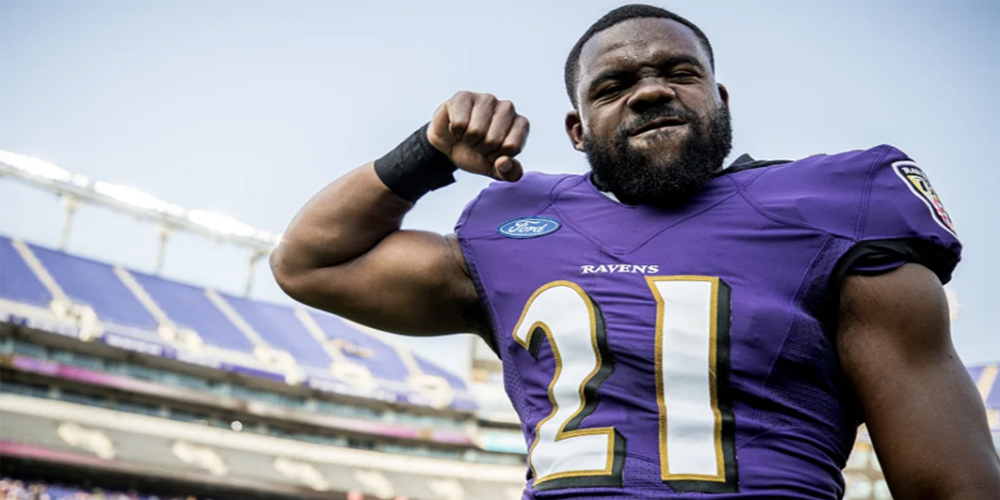Average Draft Position (ADP) can be a valuable tool when heading into any draft. It’s a barometer of where players are being taken based on drafts conducted. It can be used as a reference to see where you should be grabbing guys in your drafts, based on the data collected. No two drafts are the same as there are different draft styles, formats, and roster breakdowns, but we are going to try to help you make those tough decisions on players that are being drafted at similar spots. When preparing for a draft, you should always have a plan or a general idea of where players are being selected in each round so that you can expose as much value as possible. It’s a good idea always to have a few players lined up before making your selection, so you don’t get stuck making a panic decision. The running back position seems to be as thin as ever again this year, as it tends to dry up quickly. Let’s start by breaking down two running backs with similar ADP and see if we can exploit some value in one or the other based on either skill set or the situation they find themselves in this season. We will then take a look at two second-year receivers and see who’s more likely to see more regression this year.
Mark Ingram vs. Melvin Gordon

Melvin Gordon has found a new home with the Denver Broncos, signing a two-year $16 million deal this past off-season. The Broncos now have a formidable 1-2 punch with Gordon and Lindsay with Royce Freeman, seemingly the odd-man-out. Last season Gordon missed the first four games due to a holdout as he fought for a contract. When he returned, he finished the year gaining 612 yards on the ground, ranking 31st among all running backs and caught 55 balls for an additional 296 yards. His nine total touchdowns ranked 10th best among running backs. Learning a new offense is tough, and playing in Denver regularly in the high altitude is also a huge adjustment. There’s no doubt that Gordon will be involved in the offense; to what capacity is a different story. Gordon currently has an ADP of 39.7 RB22 and has the skillset to outperform and provide a solid return on investment.
Now that we have broken down each player’s ADP and current situation, who do you draft? For me, it’s going to be Gordon, because, at this point, he offers more upside potential. Both players make for a serviceable RB2 to any squad, but Gordon has the higher ceiling of the two. I also subscribe to the theory of “follow the money.” Meaning the Broncos paid Gordon to be there, and they will use him; he wasn’t brought in to sit on the bench or be a third-down guy. He should get the bulk of the early-down work as well as most of the goal-line carries and has a less crowded backfield. Fewer players in the rotation translates into more potential fantasy points.
AJ Brown vs. DK Metcalf
AJ Brown had a terrific rookie season last year, finishing as WR21 in overall points. He caught 52 balls on 84 targets, good for 1,051 yards and eight touchdowns, and wasn’t a full-time starter until week nine. The Titans surprised most of the NFL by making a deep playoff run to the AFC championship game last season. Led by the resurgence of quarterback Ryan Tannehill the Titans are now on people’s radar. Brown and Tannehill developed great chemistry together, which will carry over to this year, but regression is only natural. Touchdowns are hard to come by in the NFL, and Brown’s eight last year ranked seventh-best among all receivers; given the fact that number will creep down a little, he is more of a WR2 with potential upside. Currently, his ADP is 43.7 WR18; his value seems to be fair given where he’s being selected in drafts.
DK Metcalf is another rookie wide receiver that had a good year. It wasn’t quite as impressive as Brown’s, but Metcalf delivered for you if you took a shot on him late in drafts. He finished the year with 58 catches on 100 targets for 900 yards and seven scores, making him WR33 overall in points and 13th in touchdowns. The Seahawks seem to always be in the thick of it when it comes playoff time, and with Russell Wilson at the helm, they are never really out of anything. Metcalf was considered “raw” last year coming out of college, but I think all those notions were put to rest as his route tree and overall game expanded throughout the year. With another season under his belt and with more confidence, his ADP of 46.5 WR19, he can undoubtedly outperform and put up WR1 numbers.
Both players are entering their second seasons after putting up high numbers in their rookie campaigns. That said, there are apparent differences each are facing coming into this year. Metcalf is the better pick for me, and here’s why. He’s in a better situation to succeed, and the Seahawks are the better all-around football. Metcalf has a better chance of taking a step forward this season and is less likely to regress. The Titans played out of their minds last year and got excellent quarterback play from Tannehill, but that could all come crashing down this year. Metcalf is going to play opposite Tyler Lockett, which will help take the pressure off of him, while Brown will play opposite Corey Davis, who doesn’t scare any defense at this point.
